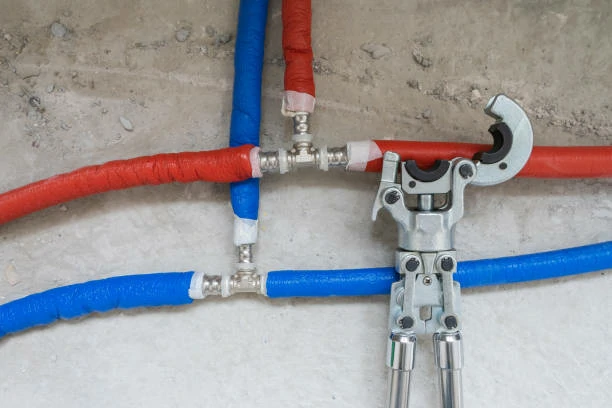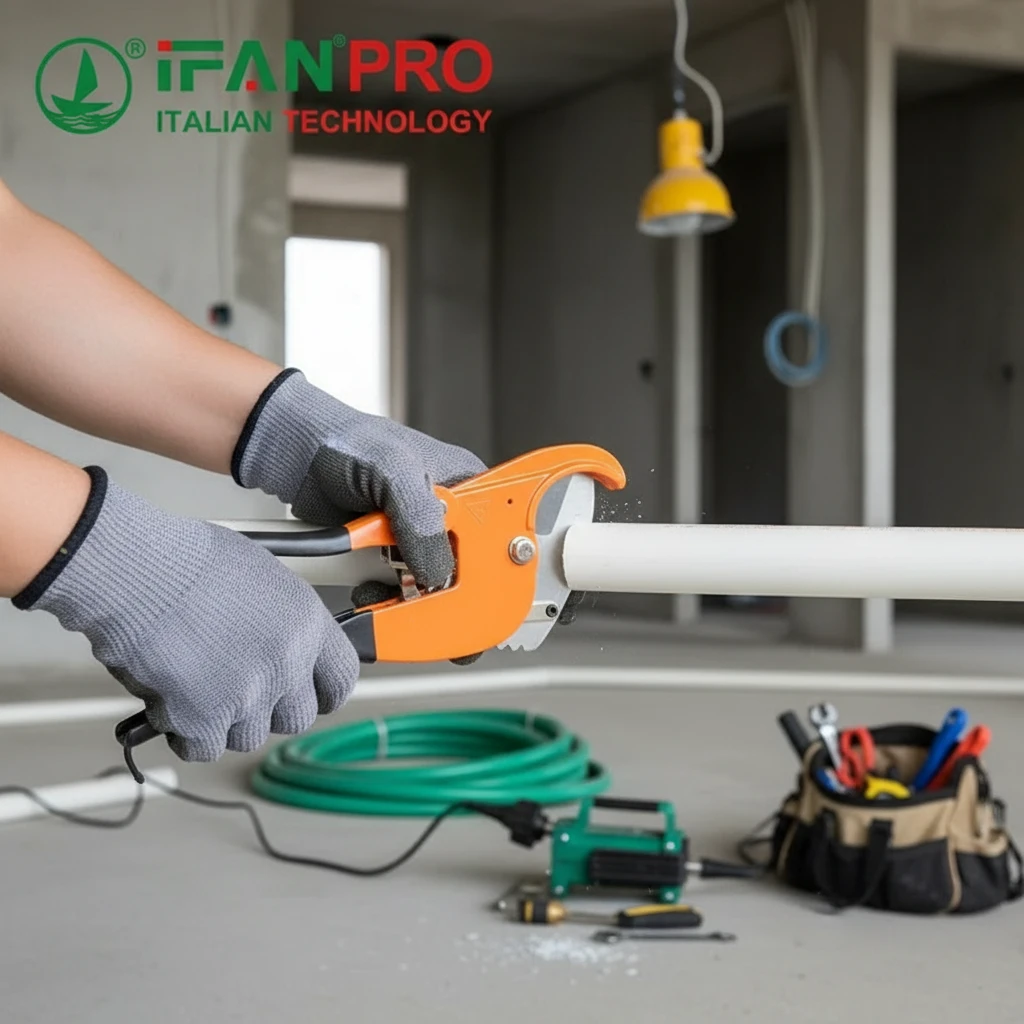PEX (cross-linked polyethylene) pipe have become a popular choice for DIY home plumbing projects due to their flexibility, durability, and ease of installation. This guide will walk you through the steps to use PEX pipes effectively in your home project.
Benefits of Using PEX Pipe
Flexibility
PEX pipe can bend around corners, reducing the need for elbow fittings. This flexibility makes installation easier and quicker.
Durability
PEX pipe resist scale and chlorine, and they do not corrode or develop pinholes. They can withstand high and low temperatures, making them suitable for various plumbing applications.
Ease of Installation
PEX pipe are lighter and easier to handle compared to traditional copper or PVC pipes. The installation process is simpler, requiring fewer tools and connections.
Tools and Materials Needed
Tools
- PEX pipe cutter
- Crimping tool or cinch tool
- Go/No-Go gauge
- Deburring tool
- Adjustable wrench
Materials
- PEX pipes
- PEX fittings (couplings, elbows, tees)
- Crimp rings or cinch clamps
- Manifold (if applicable)
- Pipe insulation (for exposed areas)
Planning Your Project
Assess Your Plumbing Needs
Determine the scope of your project. Identify the areas where you need to replace or install new pipes, and decide on the pipe diameters required for different sections.
Measure and Plan
Measure the lengths of PEX pipe needed for your project. Plan the layout to minimize the number of fittings required, utilizing the flexibility of PEX to reduce joints and potential leak points.
Choose the Right PEX Type
PEX pipe come in three types: PEX-A, PEX-B, and PEX-C. PEX-A is the most flexible and resistant to kinking, making it ideal for complex layouts. PEX-B and PEX-C are slightly less flexible but still suitable for most applications.
Cutting and Preparing PEX Pipes
Measure and Cut
Measure the required lengths of PEX pipe and use a PEX pipe cutter to make clean, straight cuts. Ensure the cuts are smooth and free from burrs.
Deburr the Pipe Ends
Use a deburring tool to smooth the cut ends of the PEX pipe. This step ensures a secure and leak-free connection with the fittings.
Making Connections
Slide Crimp Rings or Cinch Clamps onto the Pipe
Slide a crimp ring or cinch clamp onto the end of the PEX pipe. Position it about an inch from the cut end.
Insert the Fittings
Insert the appropriate PEX fitting (such as a coupling, elbow, or tee) into the end of the pipe. Push the fitting in until it bottoms out against the pipe.
Secure the Connections
Use a PEX crimping tool or cinch tool to secure the crimp rings or cinch clamps around the pipe and fittings. Ensure the tool is properly calibrated and that the rings or clamps are evenly tightened.
Check the Connections
Use a Go/No-Go gauge to verify that the crimp connections are secure. The gauge should slide over the crimp ring without obstruction.
Installing the PEX Pipes
Run the Pipes
Run the PEX pipes along the planned route, securing them with pipe supports or hangers as needed. Avoid sharp bends or kinks in the pipe, and use proper supports to maintain alignment.
Install Manifolds (if applicable)
If your project includes a manifold system, connect the PEX pipes to the appropriate ports on the manifold. Manifolds provide a centralized distribution point for water supply, reducing the number of connections and potential leak points.
Insulate Exposed Pipes
Insulate any exposed sections of PEX pipe, especially in unheated areas, to prevent freezing and maintain energy efficiency.
Testing and Final Steps
Turn On the Water Supply
Slowly turn on the main water supply. Check all connections for leaks. If you find any leaks, turn off the water and re-tighten the connections.
Inspect the System
Thoroughly inspect the entire system for signs of leaks or improper connections. Ensure that all fittings are secure and that the pipes are properly supported.
Monitor for Leaks
Monitor the system for a few hours after installation to ensure there are no leaks. If any issues arise, address them promptly to prevent water damage.
Regular Maintenance
Perform regular maintenance checks on your PEX plumbing system. Inspect for signs of wear, and ensure that all connections remain secure over time.
Tips for Success
Proper Installation Techniques
Follow proper installation techniques to avoid common mistakes. Ensure that all cuts are clean, fittings are properly inserted, and connections are secure.
Use Quality Materials
Invest in high-quality PEX pipes and fittings to ensure the longevity and reliability of your plumbing system. Inferior materials can lead to leaks and other plumbing issues.
Protect Against Freezing
Protect PEX pipes from freezing temperatures by insulating pipes in unheated areas and maintaining a warm indoor environment.
Avoid Kinking the Pipe
Be careful not to kink the PEX pipe during installation. Kinks can weaken the pipe and lead to leaks over time.
Consult Professional Help if Needed
If you are unsure about any aspect of the installation process, consider consulting a professional plumber for guidance or assistance.
Conclusion
Using PEX pipes in a DIY home project can significantly simplify your plumbing work while providing durable and reliable results. By following these steps and tips, you can ensure a successful transition to PEX plumbing, enhancing the efficiency and longevity of your home’s water supply system.
Connecter
IFAN est un fabricant chinois de tuyaux, de raccords et de vannes en plastique, fort de 30 ans d'expérience. Si vous êtes intéressé par IFAN Raccords en cuivre, vannes en cuivre, tuyaux et raccords en plastique, veuillez nous contacter. IFAN offers you a variety of standard pipes to meet your specific needs. Click below to learn more about IFAN’s wide range of affordable and cost-effective valve products and piping system related products.
We will reply your email or fax within 24 hours.
You can call us at any time if there is any question on our production.
For more information,pls visit our webside https://ifanpro.com/
Veuillez envoyer un courrier à l'adresse suivante [email protected]
Whatsapp : + 86 19857948982














Commentaires récents